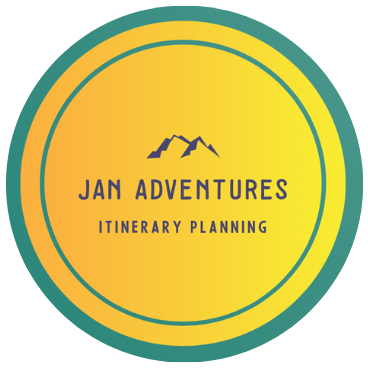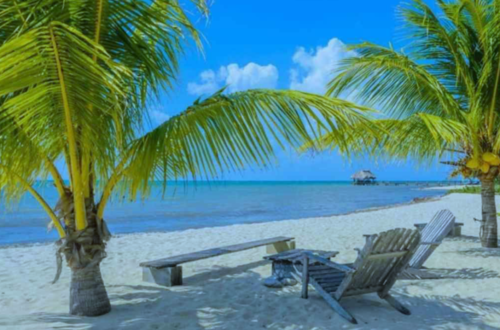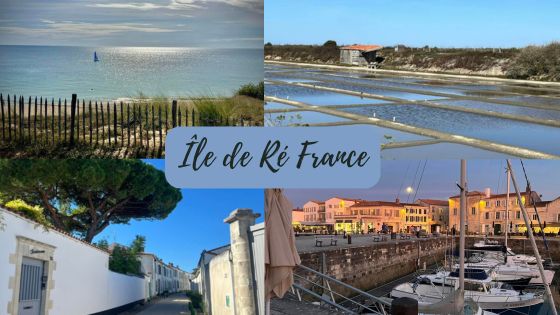
Discover Île de Ré France
Did you know there is a quaint little island off the coast of France? I discovered Île de Ré (Isle of Re) in September of 2024. This place is definitely worth a visit! If you like biking as a mode of transportation and cruising among vineyards, beaches, and salt marshes, you should go to Île de Ré France! I describe here the perfect 4-day itinerary for seeing all of the island via bike.
Overview
The 4 S’s (sun, sea, sand and salt) make up the theme of the island. Only 19 miles long and 3 miles wide, Île de Ré is often called France’s version of Nantucket (small island in Massachusetts state in the U.S.). The two islands indeed share certain characteristics, including windswept beaches and a pleasant Atlantic coastal climate. But Île de Ré is french to its core, with white-washed villages, daily food markets and many culinary delights, including some of the world’s best oysters.

The countryside is filled with pines and palms, vineyards, wildflower fields, and salt marshes. The island is flat and easy to ride its entirety on a normal bike. Île de Ré is home to a network of over 130 km (80 miles) of cycling paths. It’s pretty impressive when you compare that to the size of the island. It takes 2 hours to ride from La Rochelle Airport on the mainland to the top of Île de Ré.

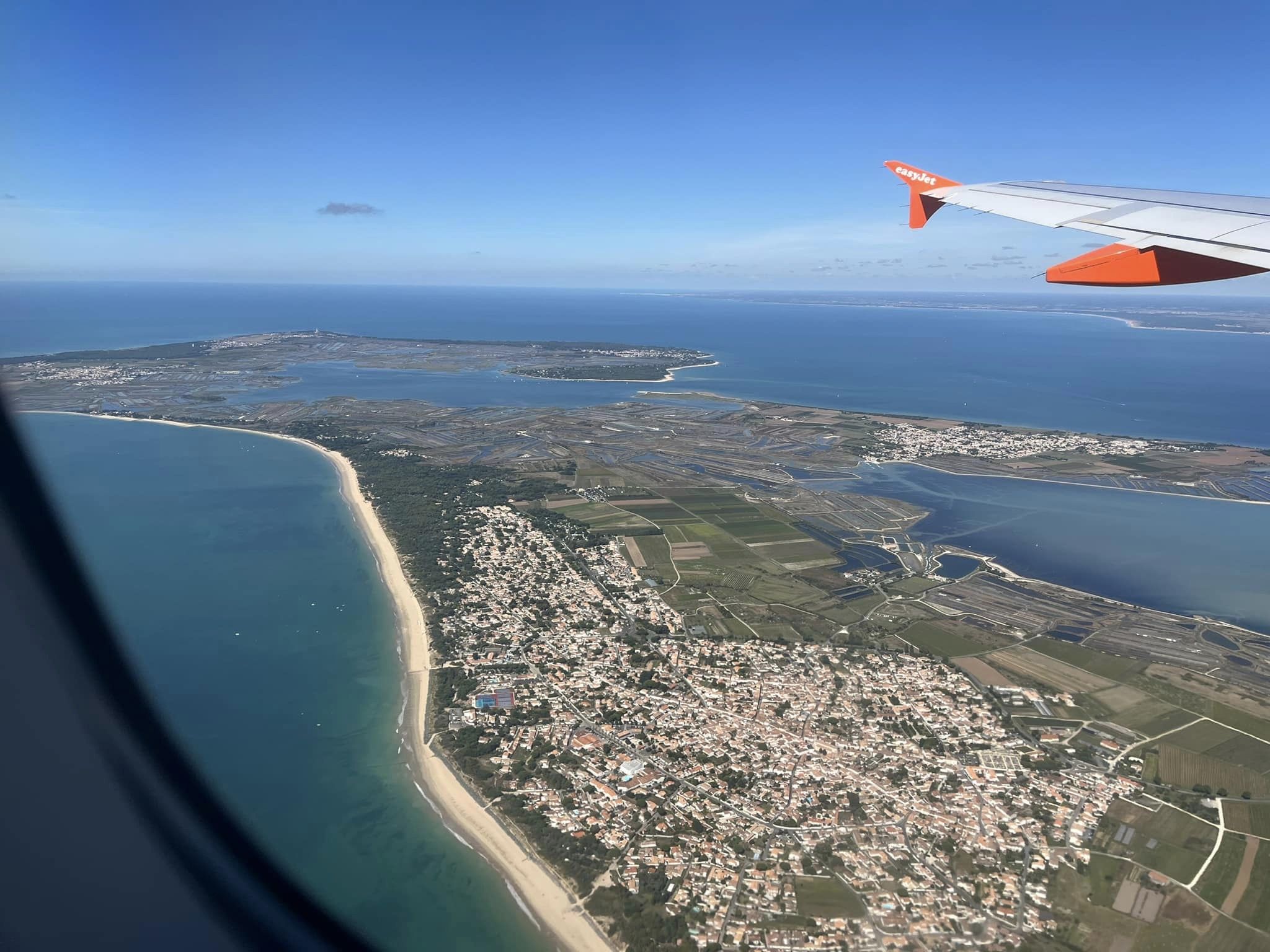
Day 1
We took an EasyJet flight from Geneva to La Rochelle. This small airport only has flights from Geneva during the warm months. We booked the last flight from/to Geneva before they stopped in mid-September. The airport is just minutes away from the bridge that leads to the island.
Access to the island is by driving over the Pont de Île de Ré (Island of Re bridge). There is a fee of 8 Euros to go across the bridge but could increase to 16 Euros in the summer months. Pedestrian and bicycle access is free with a pedestrian side of the bridge and the other with a cycle path.
We chose to base ourselves for the 4 days in Saint-Martin-de-Ré due to its size and plentitude of restaurants. This fortified city is a UNESCO World Heritage Site with a lively port atmosphere. Our plan was to rent bikes as of Day 2 and head out to discover the island everyday. We would come back to our apartment in the late afternoon and walk to the local restaurants in this town. Although it was after the high season in early September, there were still quite a few tourists.
Saint-Martin-de-Ré
Saint-Martin-de-Ré is known as the mini capital of the island. Situated inside an impressive star-shaped fort, the ancient village became a UNESCO world heritage site in 2008. The village sits within the 17th-century fortressed walls around a scenic harbour filled with restaurants, boutiques and cafes.
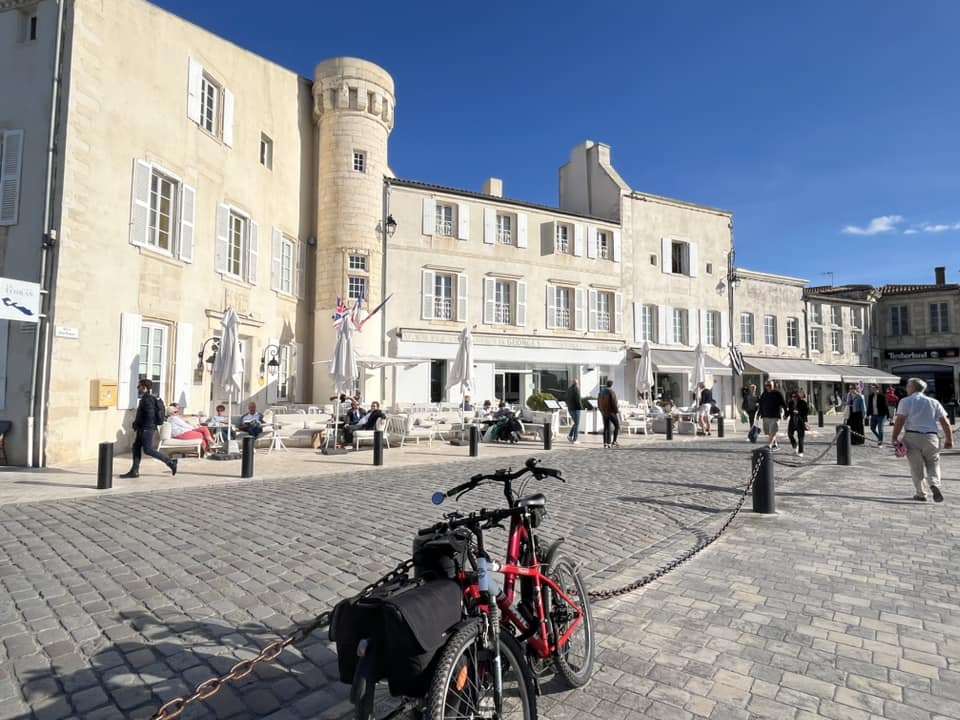
Our small but cute one-bedroom apartment was only a couple minutes walk to the center of town and the harbor. After visiting most of the other towns on the island, I can recommend Saint-Martin-de-Ré as a great place to stay.
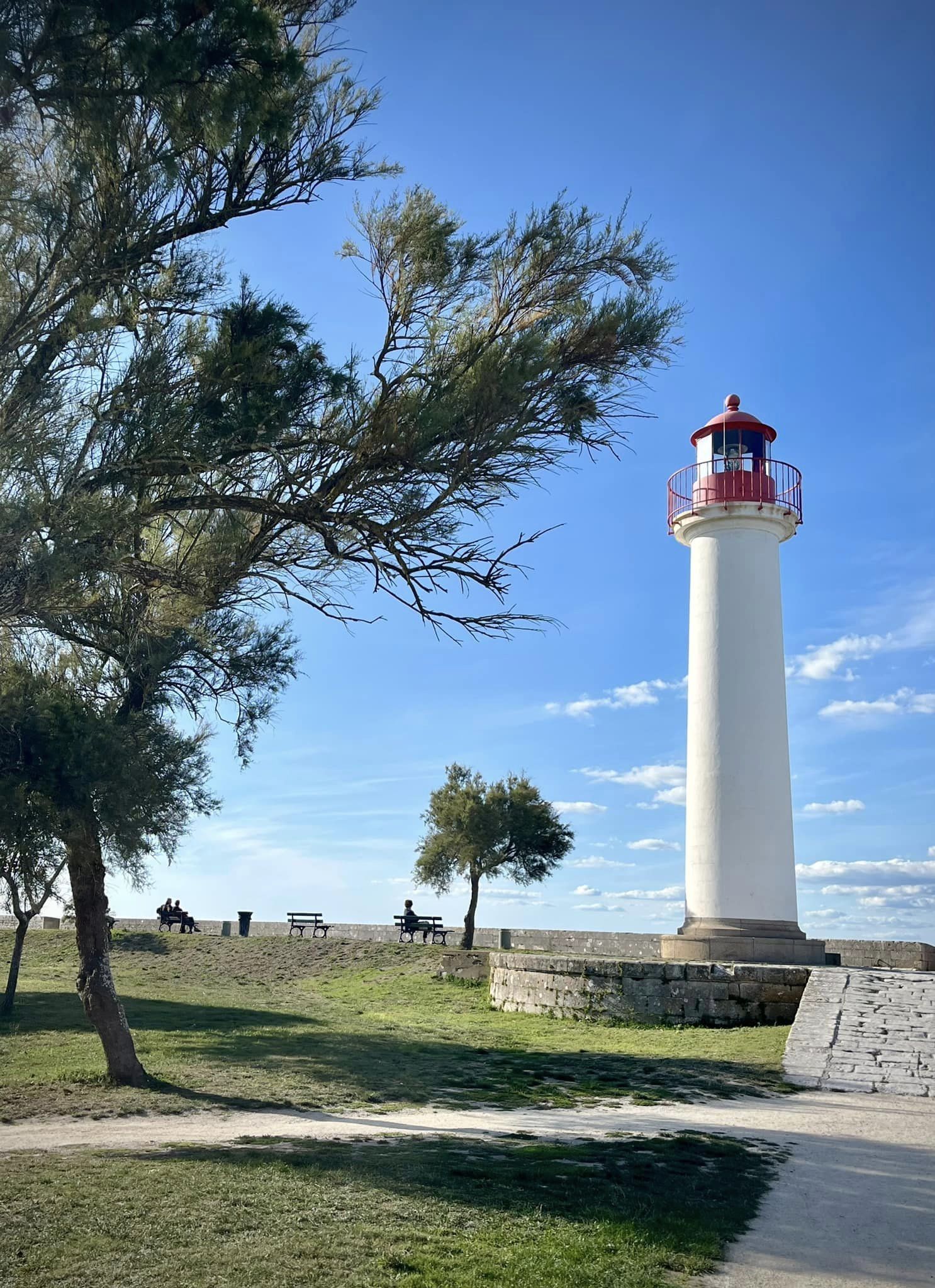

After getting settled into our apartment, we walked along the coast in search of the oyster bars by the water. Oysters and other seafood can be found in oyster bars, restaurants and local markets all throughout the island. We found a nice place with a great view to take in the local specialties. I’m not a big oyster fan but I had to try them here. I opted for the marinated ones with garlic.

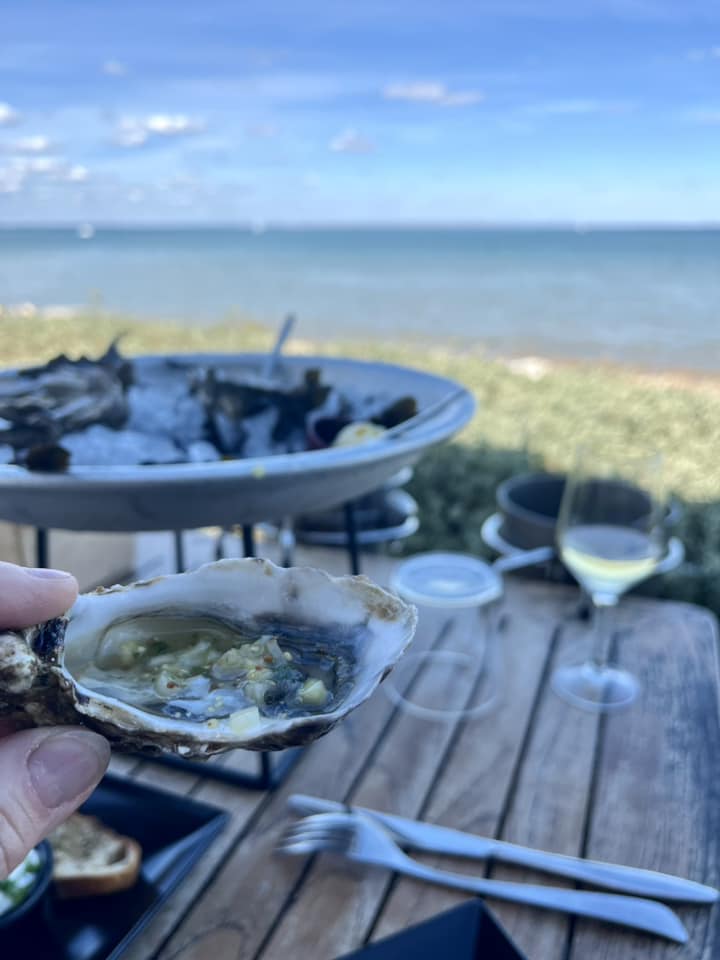
Day 2
First item on the agenda of our second day was to pick up the bikes we had reserved. The bike rental store was just around the corner from our apartment complex. Our apartment also had access to a locked garage to store our bikes each night. Having a secure place to store your bike is something to consider when reserving your accommodations on the island.

I decided to rent an electric bike as I read that it could be quite windy even though the island is mostly flat. I had no regrets of this decision as it made the time more enjoyable. You will find that most villages have bike shops where you can hire tandems, electric bikes, trailers for children as well as classic bikes.
Ars-en-Ré
Our plan on this day was to bike all the way to the northern tip of the island to see the Phare des Baleines (Whales lighthouse). We rode into the village of Ars-en-Ré and stopped to admire the Saint-Etienne church. Its unique black and white bell tower once served as a landmark for sailors before the construction of lighthouses.


Salt Marshes
We passed vineyards and many salt marshes on the way to the lighthouse. Île de Ré is covered with nearly 400 hectares of salt marshes, producing “white gold” as it is known there. Salt has been harvested since the middle ages when there used to be 1,000 “saunters” (salt makers) on the island. Today there are 100 salt makers left, still using the traditional methods and old-age techniques.
We stopped off at a salt stand and bought a bag of the locally produced salt for less than 2 Euros. In general, the salt from the island has an off-white color and is coarse.

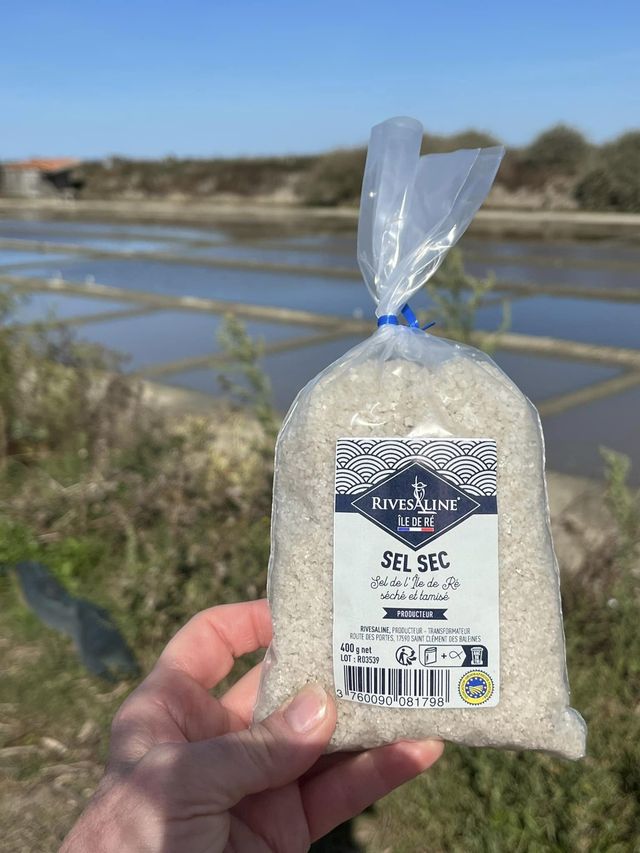

Phare des Baleines
The highlight of Day 2 was the visit to the Whales Lighthouse where we climbed 257 spiral steps for an amazing view across the island.

The 57-meter high lighthouse is located at the western tip of the island in the town of Saint-Clément-des-Baleines. The lighthouse owes its name to the fact that a relatively large number of whales used to beach themselves here in the past. Originally, the old tower at the foot of the Phare des Baleines was erected in 1682. The new structure was built in 1849 and inaugurated in 1854.




After visiting the lighthouse, we stopped at a nearby outdoor restaurant with great food and service. I had to try the mussels!
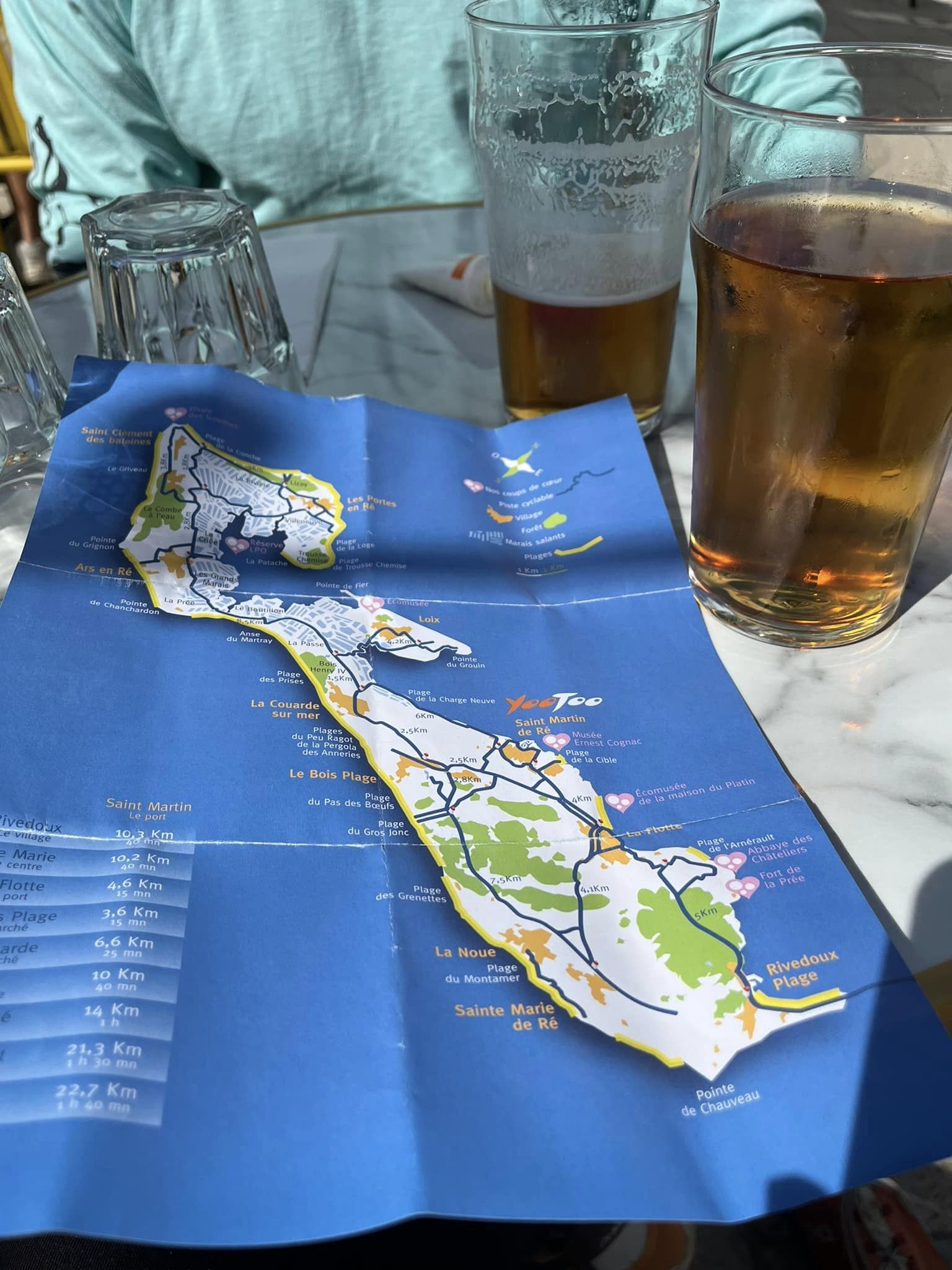

We later came across the famous long-haired donkey that this island is known for. We never saw any real donkeys with pants but we were told they have them during the summer months. These donkeys are called “Ane en culotte”, meaning donkey in panties. In the 19th century the Poitou donkey was used for the work in the marshes and fields and in order to protect the donkey’s legs against cuts, insects and the salt, a local woman had the brilliant idea to design trousers for their front and hind legs.
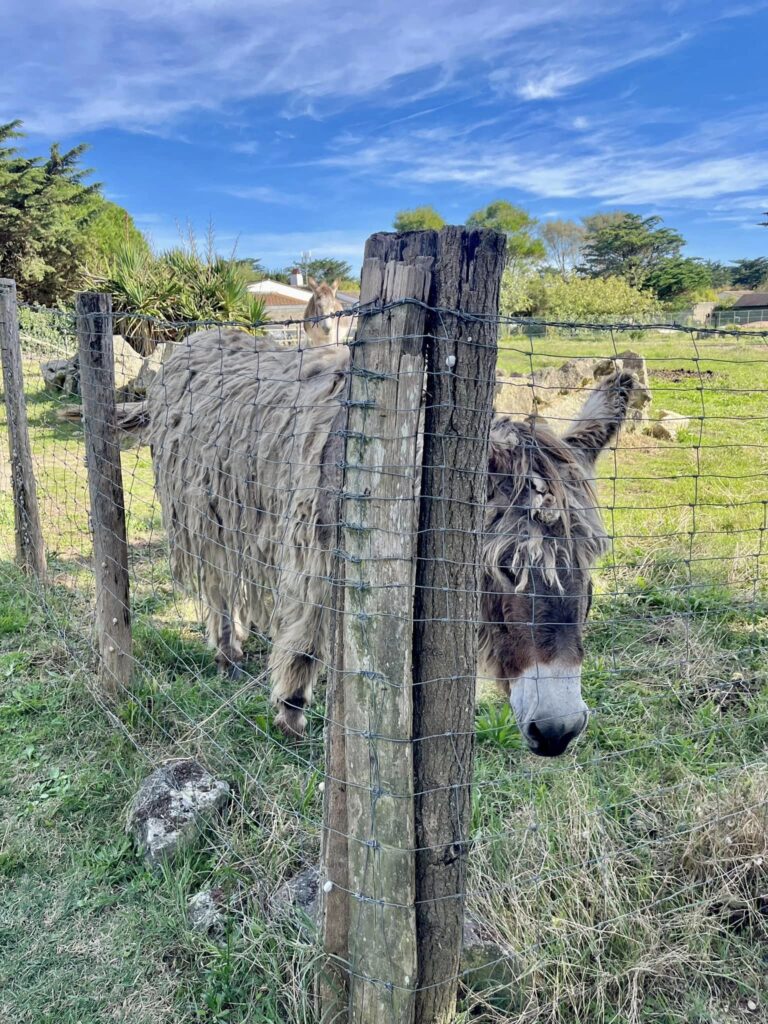

We covered most of the island on this day by biking a total of 78 kilometers and 5 hrs of riding time.
Day 3
La Flotte
Our Day 3 (Sunday) itinerary was to bike to a different part of the island and see some more sites. We first biked to the town of La Flotte where we checked out the market and quaint alleys. La Flotte is classified as one of the most beautiful villages in France.

Most houses on Île de Ré are white and single-storey. They have a limited colour pallet of green, blue or white shutters, permitted by the local council. Many are covered in hollyhocks, bougainvillaea or roses, which make the streets come alive. As we were there in September, we only saw a sample of the flowers that must flood the streets in the summer months.


Hollyhocks were introduced to the island in the 16th century by sailors returning from their voyages to the Orient. These flowers, with their bright colors and ease of cultivation, won the hearts of the island’s inhabitants. They have become a symbol of the Île de Ré, and can be found in gardens, alleyways and fields.
Abbaye des Châteliers

Just outside of La Flotte you will come upon the amazing ruins of the oldest religious building of Île de Ré from the 12th century. The abbey, which is also called the abbey of Notre-Dame de Ré, was founded in 1150 by a small group of Cistercian monks in the commune of Flotte-en-Ré.

In 1294 the Abbey of the Châteliers was destroyed for the first time by the English before being rebuilt a few years later. There were many religious wars over time which damaged the building. In 1990 the building was classified as a historical heritage site and was renovated in 1997 to serve as a tourist attraction.
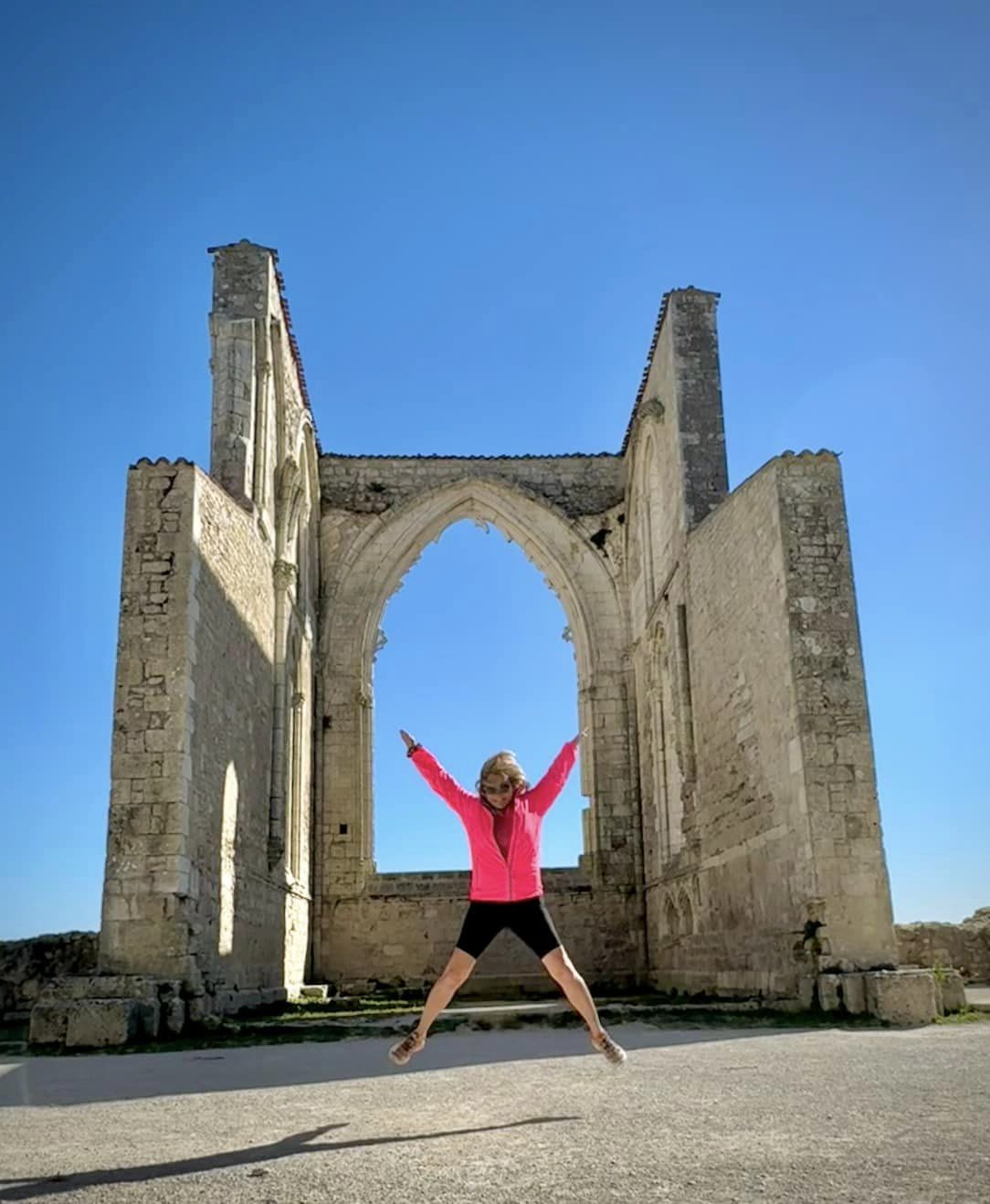
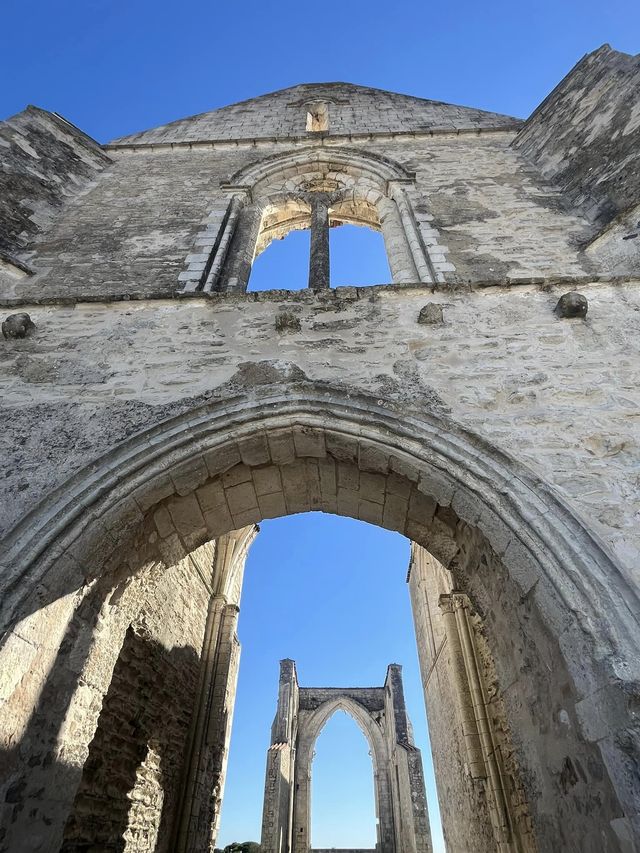
We parked our bikes and walked all around the abbey for the different views. There were very few tourists, so we were lucky to get photos without people in the background. It was a beautiful blue-sky day to enjoy this site with no entrance fee.
Rivedoux
After the abbey, we continued biking to the southeast tip of the island near the bridge. We passed the small village of Rivedoux and saw many stranded boats due to the low tide.


We stopped in the small village of La Noue to have some lunch. All the food we had on the island was delicious! Some restaurants are pricier than others, but you will find many choices.

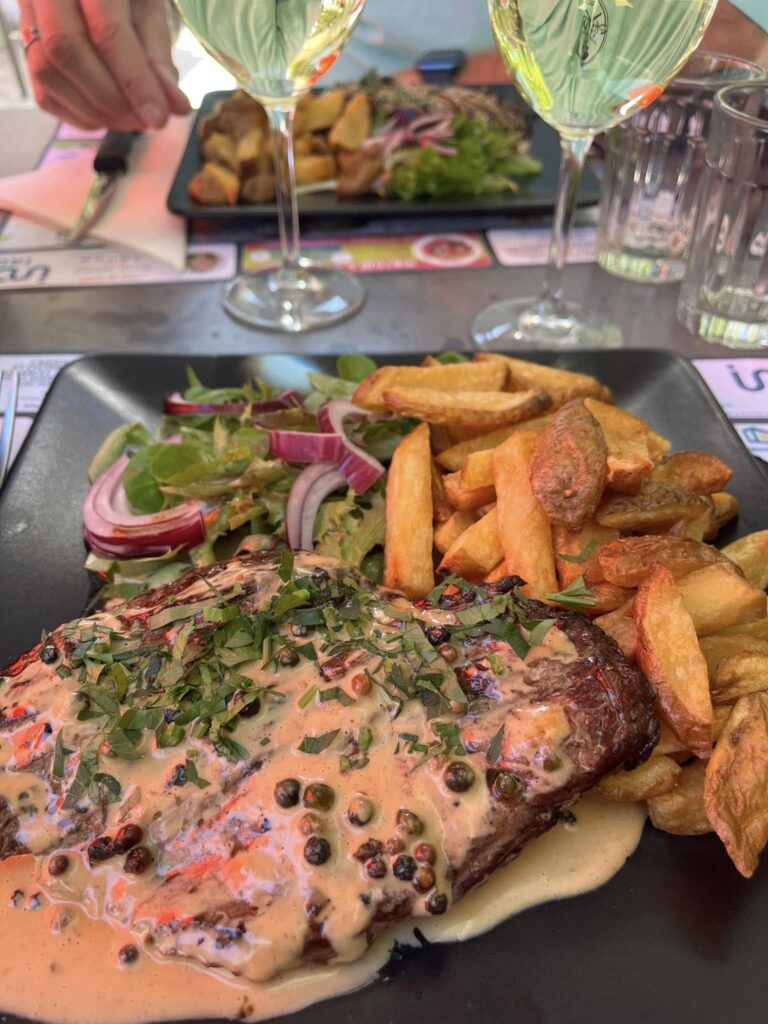
We then headed north on the bike path to a beach called Gros Joncs where my partner had a swim in the cold Atlantic waters. The most beautiful beaches are on the south and west coast of the island and cushioned by dunes and forests. The northern coastline is more rocky with small coves.

We biked back to our town of Saint Martin de Re for a gorgeous sunset and dinner. We clocked up 50 km on this day.

Day 4
On Day 4 (Monday), we decided to walk around and see more of the town of Saint Martin de Re. We visited the Eglise Saint-Martin church and climbed the 117 steps up the bell tower (small entrance fee is charged). The 360 degree view was great and the 14th century church was beautiful.
Eglise Saint-Martin
This church was built in the 15th century and still stands with its gothic ruins. The structure was destroyed several times by conflicts and finally rebuilt more modestly in the 17th and 18th century.



In the afternoon of our last day, we biked to the southern coast of the island again to see a different beach called Le Bois-Plage-en-Ré. Le Bois-Plage has 6 km of beach and a wooded area behind the dunes ideal for nice walks. We had a delicious seafood lunch at the cute beach bar and then walked along the beach.




Summary of Île de Ré
I hope you’ve enjoyed discovering the Île de Ré and seeing my photos. I had heard about this island for a few years and wanted to finally experience it. Our 4 day trip was my birthday present too!

If you like bike riding, you’ll love the experience of biking around the island. You don’t need much time to explore this island. We found four days to be the perfect amount of time. We were quite active each day and biked a total of 150 km over 3 days.
If you like beach vacations in warm weather, you could easily spend a week or two at the Île de Ré. Be warned about the crowds in the high season and peak summer months. September was a great time to visit. I would like to return in Springtime to see more flowers on the island.
For more info, refer to this website.
Check out my other blog posts about France!
If you are looking for assistance to plan your next trip, I am here for YOU! I love to plan travel itineraries for myself and others. For more details on how I provide this service, please check out my Itinerary Planning page and drop me a quick email at jan@janadventures.com to get started!


